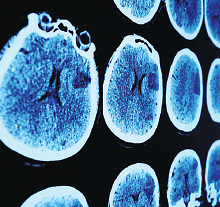Journal Digest
Use of Opioid Substitute Kratom Higher Than Ever Before

According to a report by the Centers for Disease Control and Prevention (CDC), exposure to kratom (Mitragyna specicosa)—a plant known for its stimulant and opioid effects that is typically consumed as tea, chewed, smoked, or found in capsules—is on the rise.
According to the CDC’s Morbidity and Mortality Weekly Report, the number of calls made to U.S. poison centers for kratom exposures jumped from 26 calls in 2010 to 256 calls in 2015. Of the 660 calls made from 2010 to 2015, 41.7 percent required some form of treatment by health care professionals. One death was reported among the calls.
Alcohol, benzodiazepines, narcotics, and acetaminophen were the most commonly reported substances used in combination with kratom.
The CDC stated that the public and all health care professionals should be aware of kratom and its threat as an emerging public health problem.
Anwar M, Law R, Schier J. Kratom (Mitragyna speciosa) Exposures Reported to Poison Centers–United States, 2010–2015. Morbidity and Mortality Weekly Report. 65(39);748–749.
Cancer-Derived Antibodies May Not Contribute to Psychosis

Despite evidence to suggest that antibodies targeting onconeural antigens may contribute to some psychotic disorders, a Journal of Neuropsychiatry and Clinical Neurosciences study published online August 31 concluded that serum onconeural antibody positivity is rare among patients acutely admitted for inpatient psychiatric care.
To study the prevalence of onconeural antibodies in patients admitted for psychiatric inpatient care, the authors tested the serum of 585 psychiatric inpatients for the presence of antibodies against 15 different neuronal antigens. Serum from only one patient was found to be weakly positive to antirecoverin—an antibody associated with tumor-associated retinopathy.
“To our knowledge, this is the first study addressing the prevalence of a large number of well-characterized onconeural intracellular autoantibodies in patients admitted to acute psychiatric inpatient care,” the authors wrote. “We conclude that serum onconeural antibody positivity is rare among patients acutely admitted for inpatient psychiatric care, and routine screening is not likely to be clinically informative in most cases.”
They concluded, “Additional studies are needed to determine the frequency of onconeural antibody positivity using CSF studies in this population and to clarify both the clinical indicators and risk-benefit ratio of CSF onconeural antibody screening among acutely admitted psychiatric inpatients.”
Sæther S, Schou M, Stoecker W, et al. Onconeural Antibodies in Acute Psychiatric Inpatient Care. J Neuropsychiatry Clin Neurosci. August 31, 2016. [Epub ahead of print]
Supportive Behavioral Therapy May Reduce Pain, Alcohol Use

A low-cost intervention that combines principles of cognitive-behavioral therapy with an approach that encourages patients to identify ways to function in the face of pain can reduce pain and alcohol use and improve pain-related functioning over the long term, according to a study published in Addiction.
To determine how ImPAT (Improving Pain during Addiction Treatment) compares with other common approaches to patients with substance use disorder and pain, researchers from the VA Ann Arbor Healthcare System’s Center for Clinical Management Research and University of Michigan Medical School’s Addiction Center randomly assigned 129 VA patients (who were all receiving outpatient addiction treatment) to receive ImPAT or a general educational support.
Veterans who received ImPAT reported significantly lower levels of pain intensity, improved pain-related functioning, and lower levels of alcohol consumption 12 months after beginning therapy compared with those receiving educational support. The groups reported similar frequency of drug use over the follow-up period, however.
“These results highlight the need for addiction treatment programs to offer a multifaceted approach that doesn’t only address substance use but also the other factors that might be driving substance use, including pain,” lead author Mark Ilgen, Ph.D., stated in a press release.
The study authors have already launched a follow-up study in a larger group of 480 nonveterans in a residential addiction treatment program.
Ilgen M, Bohnert A, Chermack S, et al. A Randomized Trial of a Pain Management Intervention for Adults Receiving Substance Use Disorder Treatment . Addiction. August 2016; 111(8):1385-1393.
Stem Cells Reveal New Clues About Children With Williams Syndrome

Researchers have successfully cultured a neuronal network from children with Williams syndrome—a rare inherited disorder that is sometimes characterized as “reverse autism” because of the extremely social nature of children with the disorder.
To examine how neural progenitor cells in patients with Williams syndrome compared with those of patients without the disorder the researchers from the University of California, San Diego; the Salk Institute for Biological Studies; and elsewhere acquired stem cells from the dental pulp of baby teeth donated by young children with Williams syndrome.
Neural progenitor cells in Williams syndrome failed to proliferate as well as typically developing neural progenitor cells. The cells that reached maturity were characterized by “longer total dendrites, increased spines and synapses, aberrant calcium oscillation, and altered network connectivity,” the authors reported.
The neuronal morphology was confirmed with an analysis of postmortem brain tissue, suggesting that these changes occur early in development and are maintained after birth.
“This model of human-induced pluripotent stem cells fills the current knowledge gap in the cellular biology of Williams syndrome and could lead to further insights into the molecular mechanism underlying the disorder and the human social brain,” the authors stated.
This study was published in Nature.
Chailangkarn T, Trujillo C, Freitas B, et al. A Human Neurodevelopmental Model for Williams Syndrome. Nature. August 10, 2016. [Epub ahead of print]
Cost-Effectiveness of Second-Line Antidepressants Found to Be Similar

While previous studies have found bupropion, sertraline, and venlafaxine to be equally effective in treating major depressive disorder in patients who first fail to respond to citalopram, few studies have compared the cost-effectiveness of the treatments. A study from the STAR*D (Sequenced Treatment Alternatives to Relieve Depression) trial suggests there is no significant difference in the cost-effectiveness of switching to bupropion, sertraline, or venlafaxine after an unsuccessful treatment with citalopram.
The findings were published August 15 in Psychiatric Services in Advance.
A total of 727 patients with major depressive disorder who inadequately responded to citalopram were randomly switched to treatment with bupropion (average daily dose, 223 mg), sertraline (94 mg), or venlafaxine (122 mg) for depression treatment. The calculated costs associated with treatment were based on three components: antidepressant medications, other medications (medications commonly required to manage the side effects of antidepressants), and health care facility use (including outpatient visits, emergency room visits, and hospitalization).
Results showed that although the total costs among the three groups were significantly different, none of the pairwise differences in overall costs for the three drugs attained statistical significance—a finding the authors attributed to “the large variability in costs.”
“This study reemphasizes that overall treatment costs need to be considered rather than drug costs alone in order to estimate the costs incurred or cost-effectiveness within a clinical trial,” the study authors wrote.
Singh A, Brooks M, Voorhees R, et al. Cost-Effective Drug Switch Options After Unsuccessful Treatment With an SSRI for Depression. Psychiatr Serv. August 15, 2016. [Epub ahead of print]
Patients With Mental Illness May Face Longer Waits at ER, Only to Be Transferred

People who visit emergency rooms (ER) for mental health care may wait almost two hours longer compared with nonpsychiatric care seekers, and get transferred to another facility six times as much, according to study appearing in the September issue of Health Affairs.
“Previous research shows that patients in the ER often experience lengthy wait times, but our new study shows that psychiatric patients wait disproportionately longer than other patients—sometimes for several hours—only to ultimately be discharged or transferred elsewhere,” lead author Jane M. Zhu, M.D., M.P.P., of the Perelman School of Medicine at the University of Pennsylvania said in a press statement. “Overall, the study highlights the degree to which emergency departments struggle to meet the needs of mental health patients.”
The study examined data for more than 200,000 ER visits from 2002 to 2011 that were collected as part of the Center for Disease Control and Prevention’s National Hospital Ambulatory Medical Care Survey.
The analysis showed that psychiatric patients experienced average length-of-stays that were significantly longer than non-psychiatric patients for multiple outcomes: 355 versus 279 minutes (5.9 hours versus 4.7 hours) for patients admitted for observation, 312 versus 195 minutes (5.2 hours versus 2.4 hours) for patients who were transferred, and 189 versus 144 minutes (3.5 hours versus 2.4 hours) for patients who were discharged.
Only in the case of patients admitted for observation did this length-of-stay gap appear to close between 2002 and 2011.
“There has been progress made recently as the number of hospital-based psychiatric ER units has increased, along with regional psychiatric emergency care facilities that can quickly take in patients who visit local ERs,” Zhu said. “However, these improvements have yet to offset the overall shortage of psychiatric inpatient resources.” ■
Zhu J, Singhal A, Hsia R. Emergency De-partment Length-Of-Stay For Psychiatric Visits Was Significantly Longer Than For Nonpsychiatric Visits, 2002-11. Health Aff. September 1, 2016; 35(9):1698-1706.



